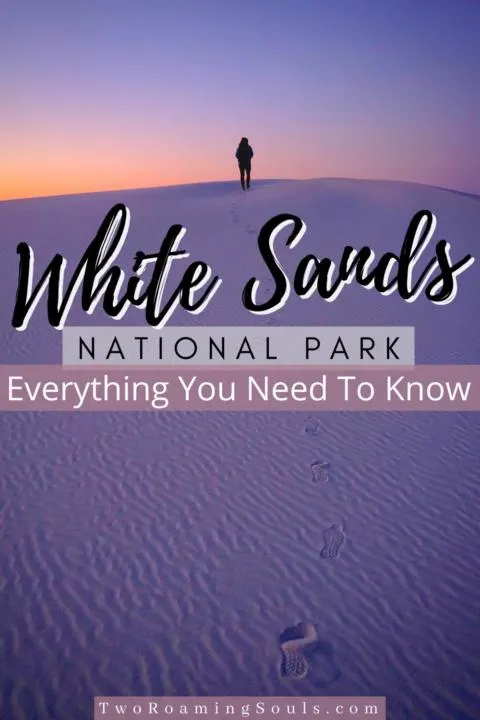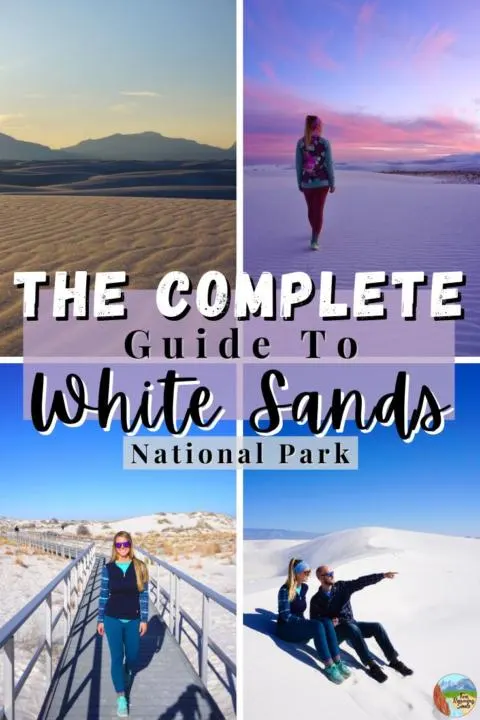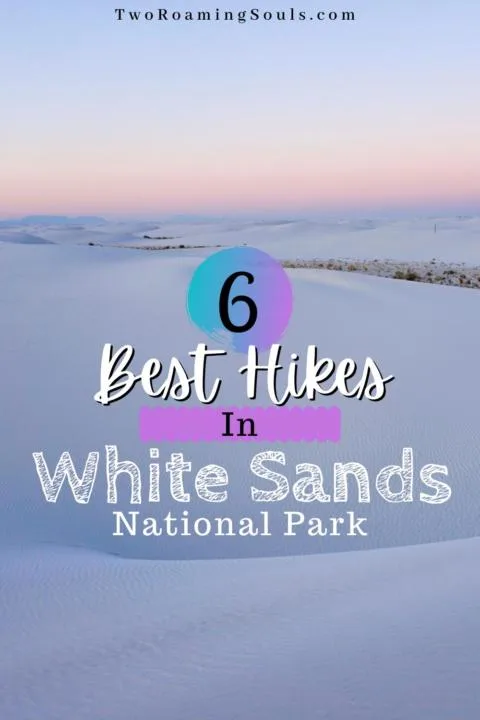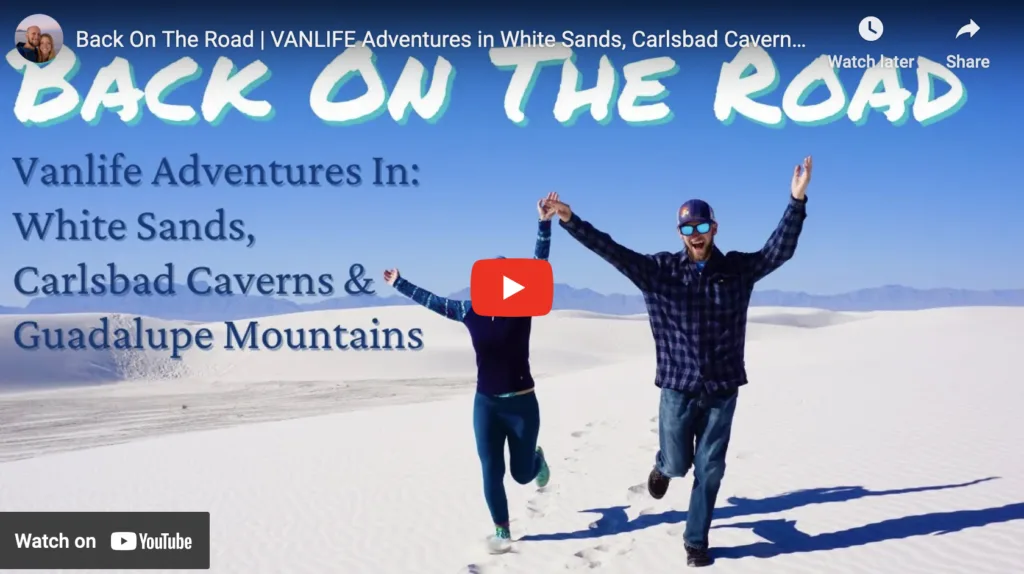Looking for a majestic place to visit in New Mexico? White Sands National Park is what you came for then. White dunes of sand cover nearly 145,762 acres. The rolling sand dunes are made up of Gypsum from the Ancient Permian Sea, from millions of years ago. Wind and water moved this gypsum sand making the dunes as we see them today. And it recently got a new upgrade from National Monument to National Park in 2019. So enjoy The Complete Guide To White Sands National Park below.
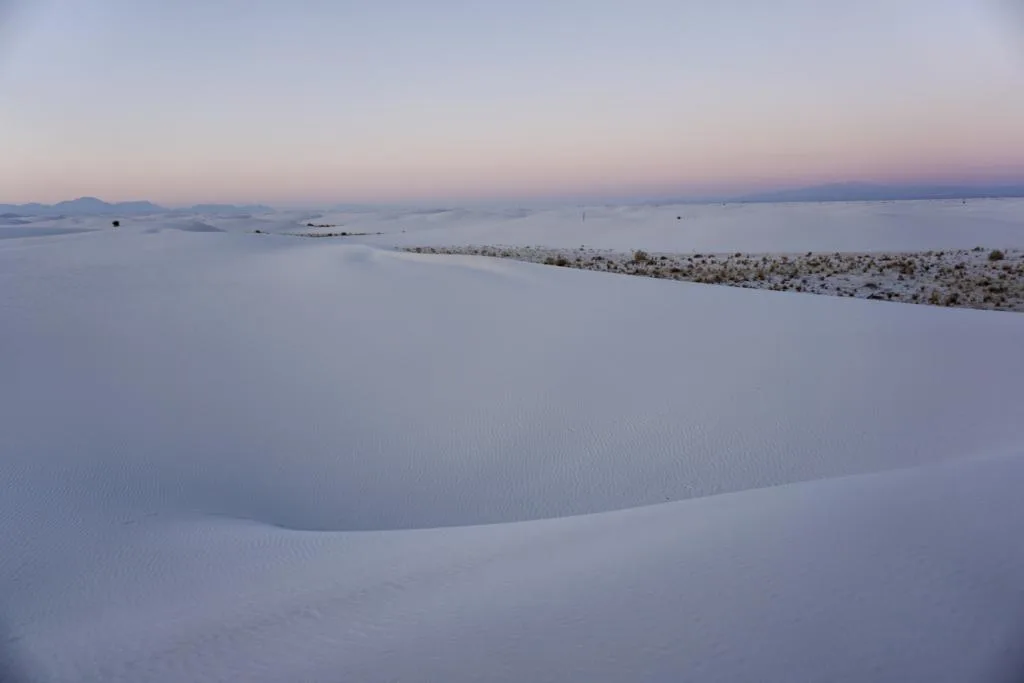
This post may contain affiliate links. Disclosure policy.
Dogs:
Want to bring your furry friends along? White Sands National Park is also dog friendly as long as they are on a 6 foot leash and their waste is properly disposed of.
Safety at White Sands National Park:
Here are a few safety tips you should follow when visiting White Sands National Park.
Bring lots of water:
The first thing on the complete guide to White Sands National Park is to bring enough water. You are in the desert, so conditions are dry and hot most of the year. There is no shade amongst the dunes, so be sure to bring at least 1 gallon of water when out on a hike exploring the dunes.
There is a water fountain at the visitor center where you can fill up your bottles. But there is no water source after entering into the park.
Know where you are going:
It can be easy to get lost out there. There are a few trails you can follow (more details below). If you decide to explore off-trail, either stay in eyesight of your vehicle or be sure to bring along a phone or GPS tracker to get back safely to your car. There is a little bit of cell-service out there, so you might be able to “drop a pin” where you park your car. But it’s best to not go too far from your vehicle if you have no way of getting back safely.
Sunscreen/Proper Layers:
Like mentioned above, there is no shade hiking amongst the dunes. So bring sunscreen and the proper layers to shield yourself from the sun.
Unexpected Weather:
There are a few different seasons you need to be hyper aware of. February through May is White Sand National Parks “Windy Season”. Dust storms can take over the area making it nearly impossible to see.
July through September is “Monsoon Season”, so be prepared for unexpected thunderstorms that could roll through. Seek cover as soon as you can. If you are unable to seek shelter, avoid high sand dunes, as those areas are more likely to get struck.
Venomous creatures:
Lastly, look out for a few different venomous creatures that live out in the sand dunes. There are rattlesnakes, scorpions, black widows, and harvester ants that can be found amongst the vegetation in the sand dunes. Most of these venomous creatures hibernate in the winter, therefore if you want to avoid them, visit during the colder months.
Best Times To Visit White Sands National Park:
Spring and Fall are definitely White Sands National Parks peak season. The weather tends to be much more desirable. But if you want to avoid the crowds and are okay with the mild winter temperatures, winter is very pleasant.
Jake and I visited during the winter, and the temperatures were in the mid 50’s with the sun shining. It made it cold for sunset, but during the day, it was decently warm when the sun was shining.
Loop Drive:
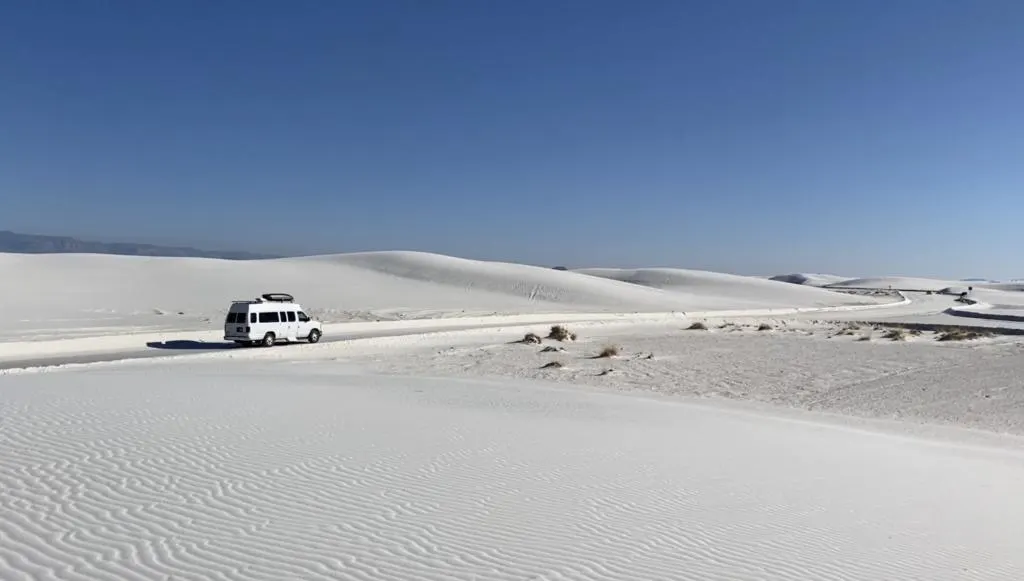
A must-do drive on the complete guide to White Sands National Park is the Loop Drive. It is a very short drive that takes you from the entrance of the park around a loop toward the end of where vehicles can drive. The road is hard packed sand so any 2wd can easily make it on the sand.
Sledding at White Sands National Park:
Also, sledding is a fun activity to do when visiting White Sands National Park. You can either bring your own sleds or purchase one at the visitor center. Then, your adventure awaits. The only rules are to not sled on the Interdune Boardwalk Trail, Playa Trail and Dune Life Nature Trail. But anywhere else in the park is fair game.
Also, we would suggest starting small, so you don’t get going to fast down a steep hill and potentially hurt yourself. There are plenty of different sized hills amongst the park.
Best Hikes at White Sands National Park:
There are tons of great hikes in White Sands National Park. Here are a few hiking trails we recommend.
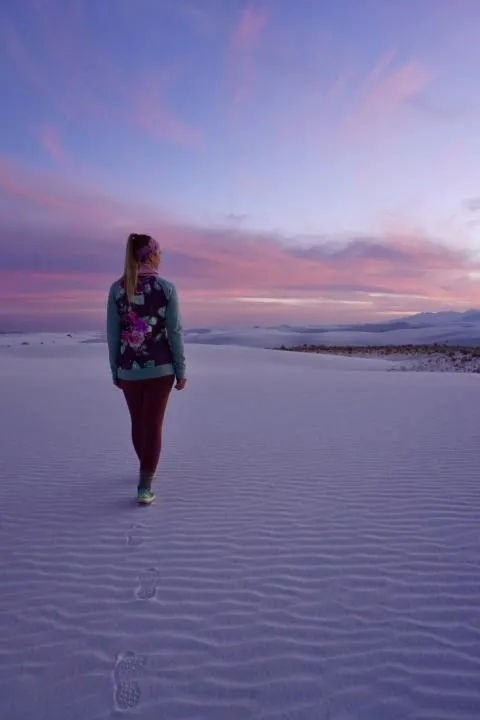
Playa Trail:
Playa Trail is an easy ½ mile hike that is marked with green markers with a heart on it to stay on trail. Learn about White Sands history and importance along your route. Along the trail you will see Playa which is a dry, flat area where water builds up after storms. Be sure to stay on the trail to preserve the biological soil crust.
Dune Life Nature Trail:
Looking to learn about the nature that lives amongst the dunes? Dune Life Nature Trail is along the edge of the dunefield, therefore there is more vegetation than other hikes amongst the dunes. You will learn about the animals that live in the area and what they eat. The hike is an easy 1 mile hike. Follow the blue markers with a club on it to stay on trail.
Interdune Boardwalk:
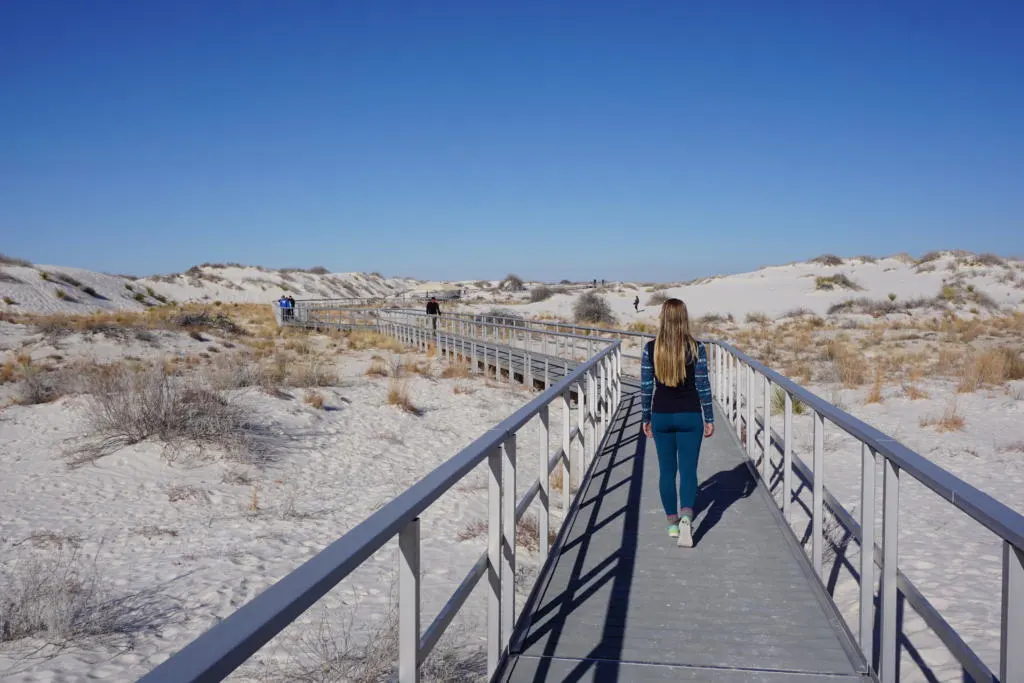
The Interdune hike is a short .4 mile hike. It is also wheelchair friendly! The trail is covered in a boardwalk bringing you amongst beautiful sand dunes. The area off the boardwalks is reserved for nature study, so stay on the boardwalk.
Alkali Flat Trail:
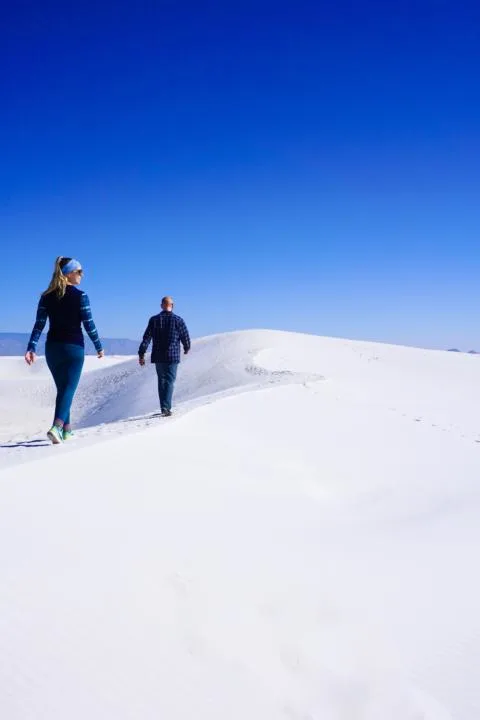
If you are looking for a bit of a longer hike in the area, check out Alkali Flat Trail. The hike is 5 miles meandering up and down dunes, making it quite strenuous. The trail follows along the final remnants of what used to be Lake Otero.
Follow the red markers with a diamond on it to stay on trail. This trail is especially important to bring enough water along. There is no shade and walking through the sand can be challenging.
Backcountry Camping Trail:
This trail can be hiked as an easy day hike, or you can do it as a fun backpacking trip (more details below). The hike is 2 miles meandering up and down the white sand dunes. Follow the orange markers with a spade on it to stay on trail.
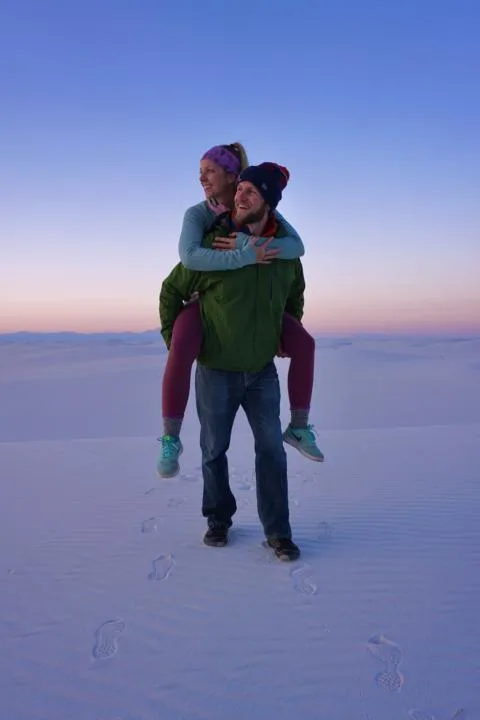
Lake Lucero:
Lake Lucero is not located in the main section of White Sands National Park. It is 15 ½ miles Southwest from the visitor center. But you can’t easily access the Lake because you must travel across the White Sands Missile Range.
Therefore, it is only open during ranger-led tours. Which is only offered once a month in January, February, March, April, November, and December. But you will gain the full history of how White Sands National Park all began millions of years ago.
For more information about obtaining tickets, visit the National Park Service Website.
Accommodation at White Sands National Park:
Last but not least on the complete guide to White Sands National Park is accommodation.
Backcountry Camping Trail:
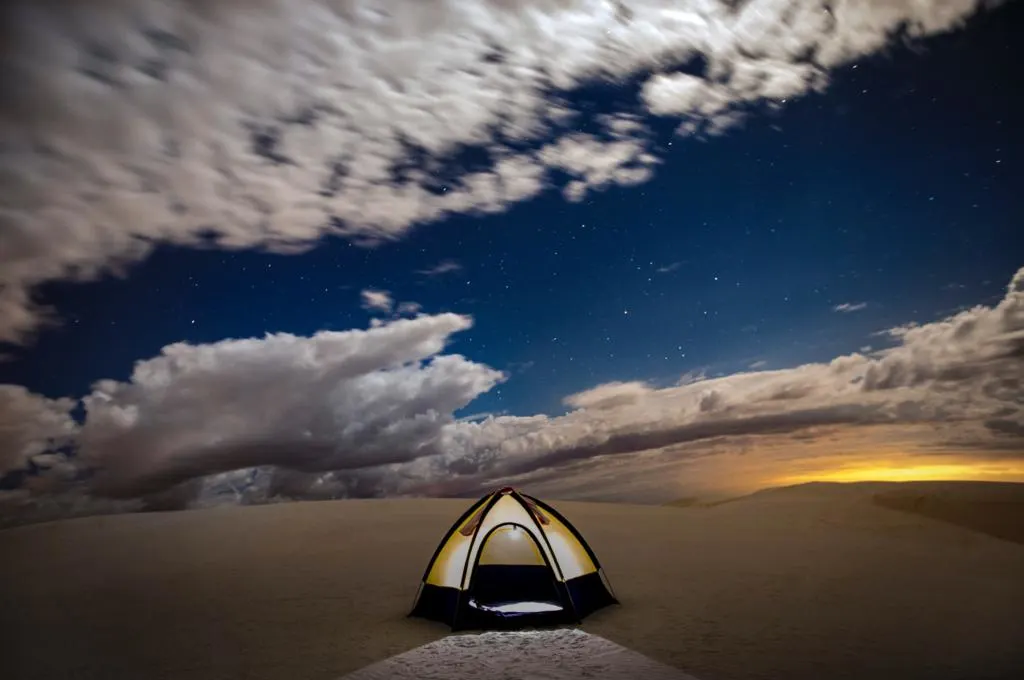
If you are looking to camp within the park then Backcountry Camping Trail is your only option. But you must obtain a permit to stay overnight. Ten permits are available per day at the Dunes Drive Entrance Booth which are given out at a first-come, first-serve basis. Do note, they lock the gate at the end of the night, so you will be locked into the park until the park opens in the morning.
For the full details about camping on Backcountry Camping Trail, visit the National Parks Service Website.
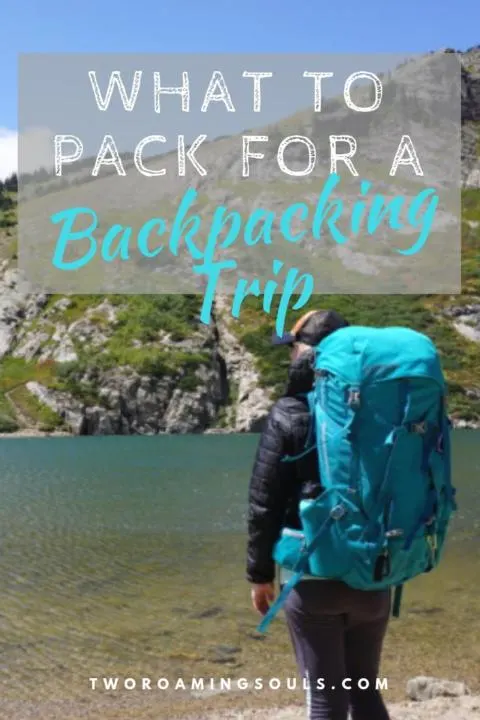
If backpacking, don’t forget the essentials! Check out our post: The Ultimate Backpacking List
Camping Near White Sands National Park:
If you are looking for a free place to camp outside the park and you are in a self-contained camper there is a Walmart about 20 minutes from the entrance in Alamogordo. Jake and I stayed here for the night and had a peaceful night.
For other free campsites in the surrounding area, check out our post: 3 Great Websites To Find Free Camping
If you are looking for a paid campground with hook-ups, look into the White Sands KOA.
Hotels Near White Sands National Park:
If camping isn’t really your style, there are a few hotels in the next town over that can easily accommodate you. Use Kayak.com to find the best deals on hotels.
Take A Virtual Tour With Us Through The Park:
Jake and I went on a fun vanlife road trip through the White Sands National Park, Carlsbad Caverns National Park, and Guadalupe National Park. Check out the fun we had via our Youtube Video.
Takeaway | The Complete Guide To White Sands National Park:
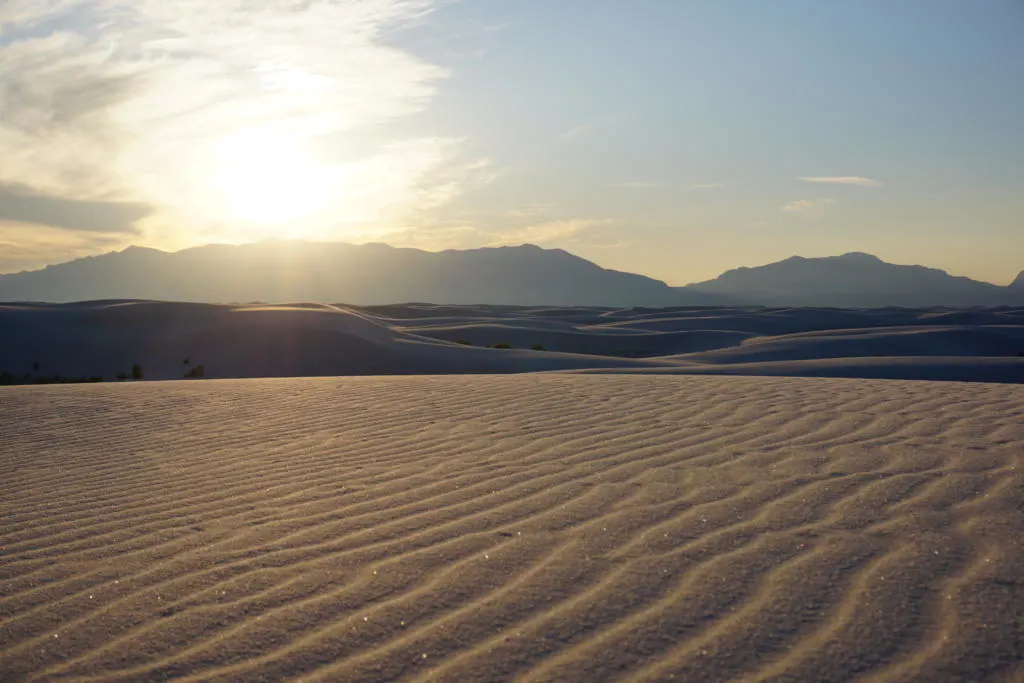
In conclusion, if you are traveling in Southern New Mexico, you should definitely check out White Sands National Park. Strolling along the sand dunes is majestic. In our opinion, you can easily visit the park within a day. Unfortunately during the time we went, backcountry camping wasn’t allowed, but we think it’d be a great way to really experience the park. We hope you enjoy the complete guide to White Sands National Park.
Save This ‘ White Sands National Park Guide’ For Later
